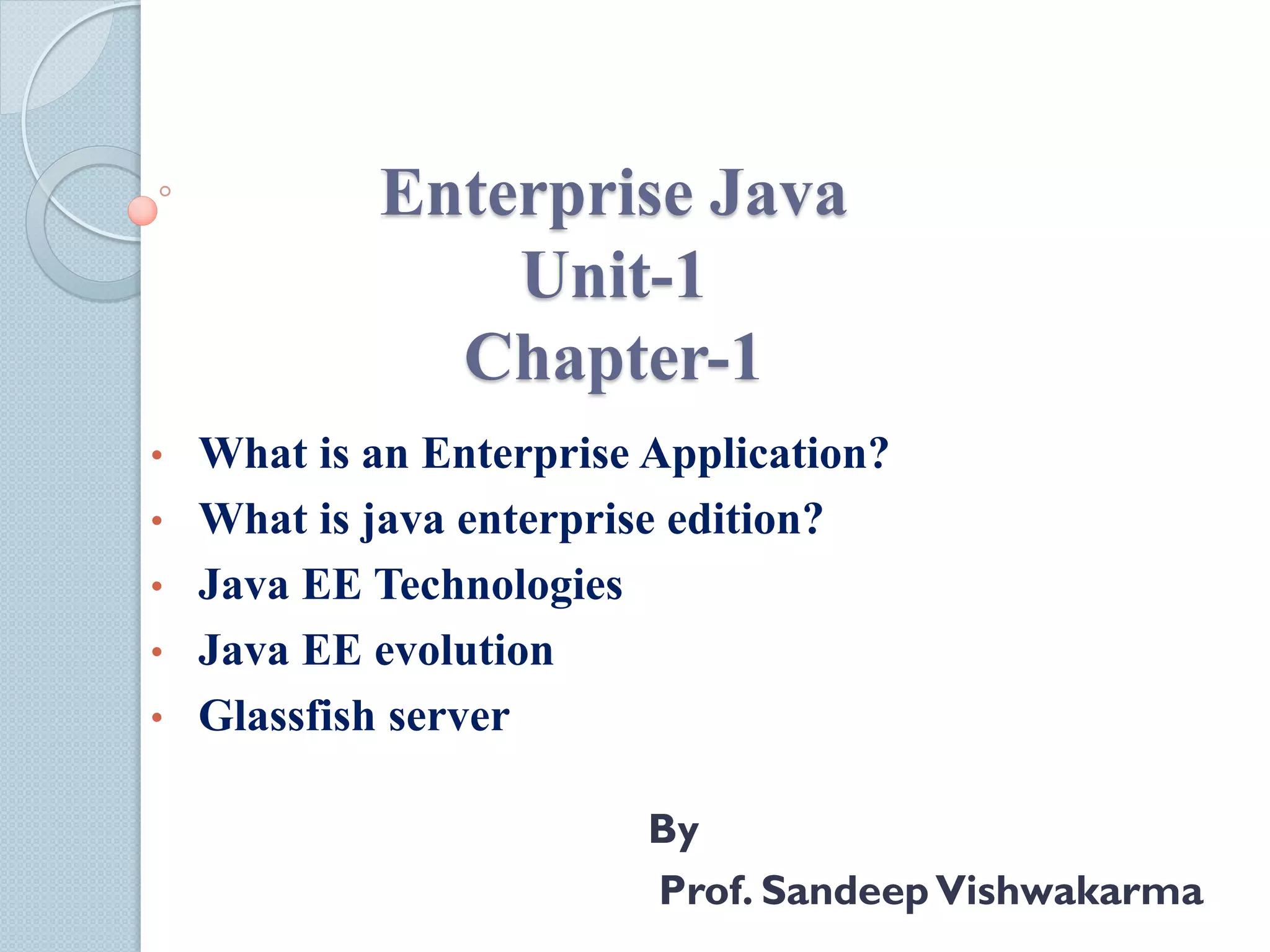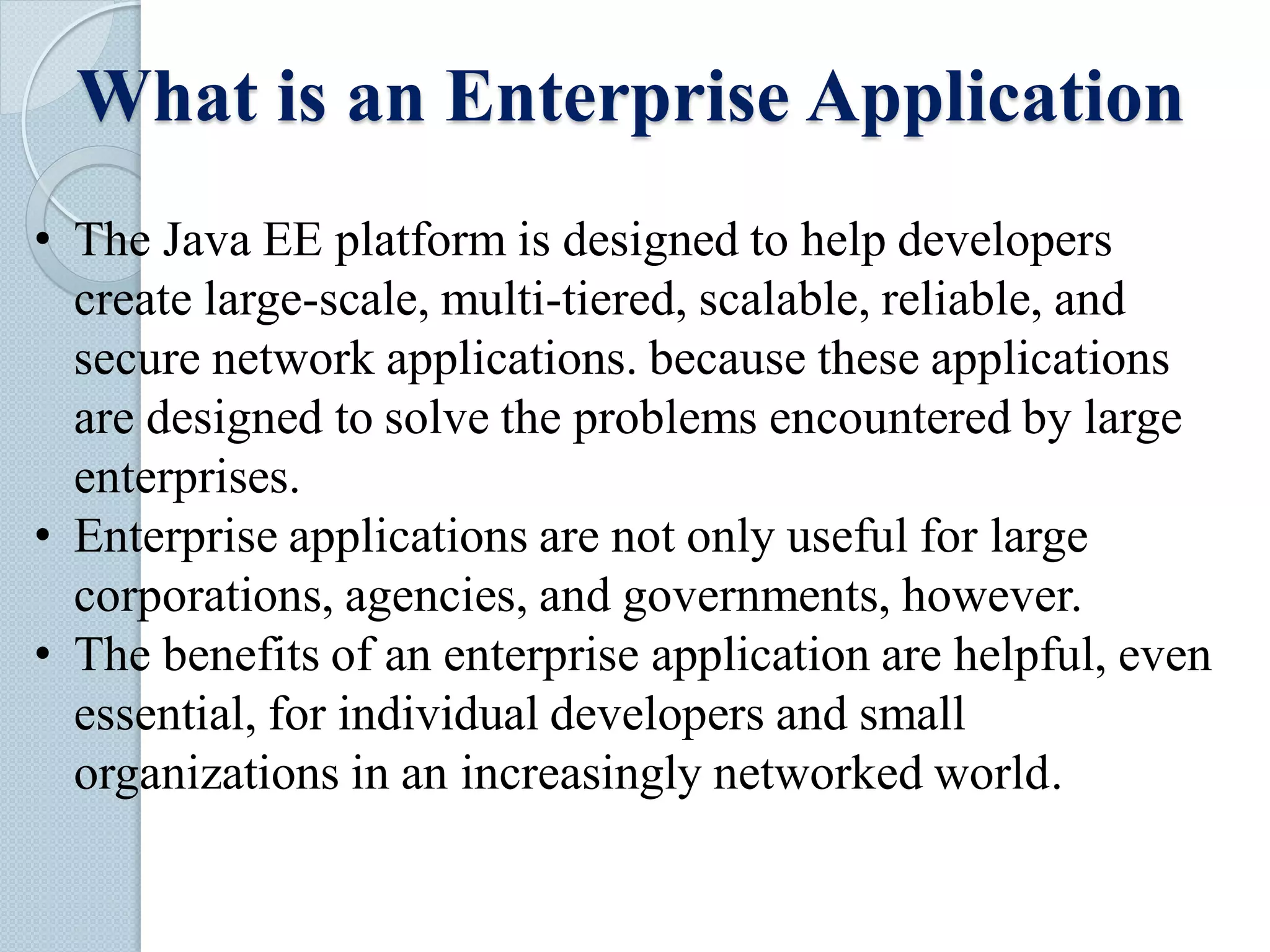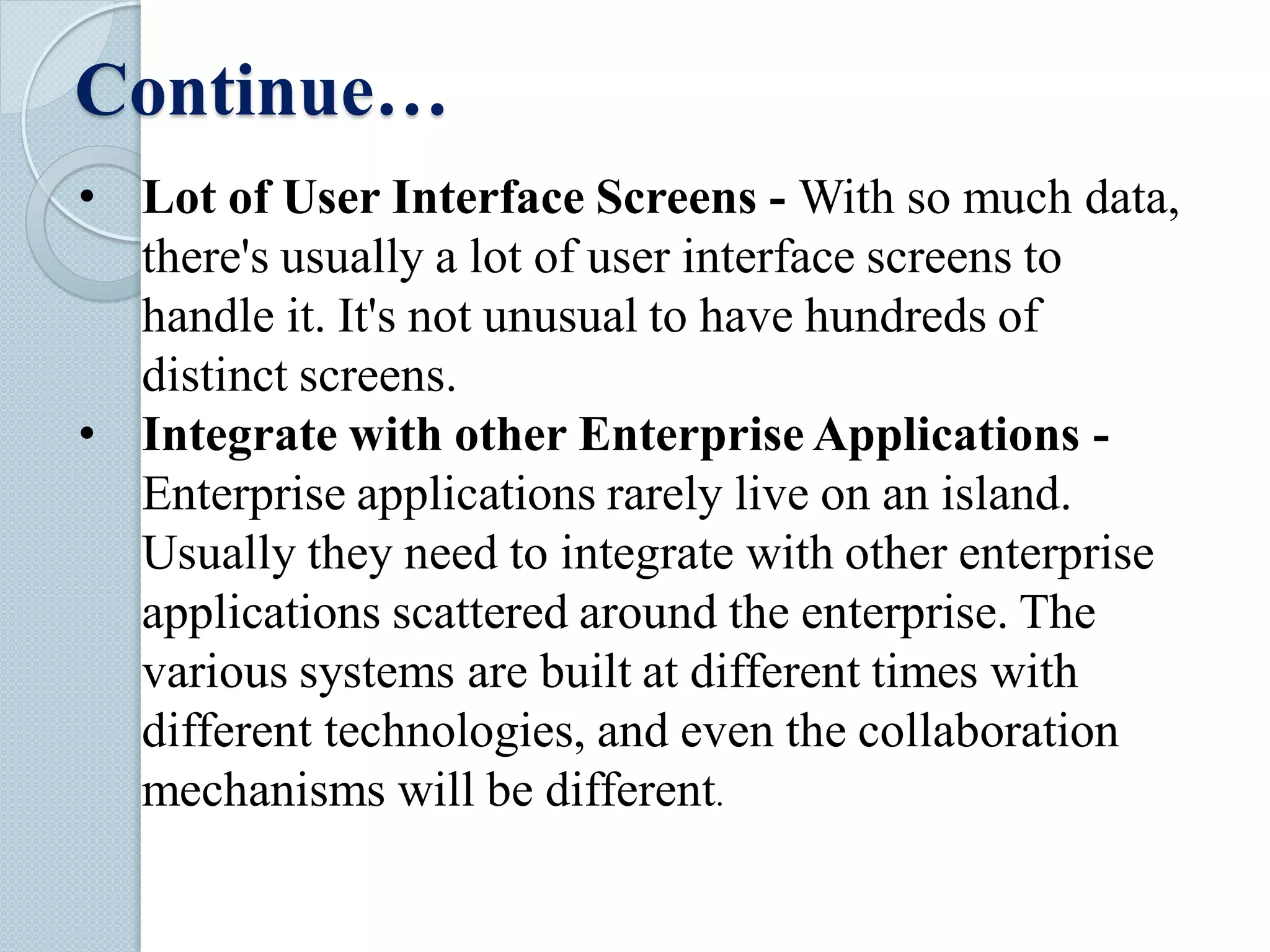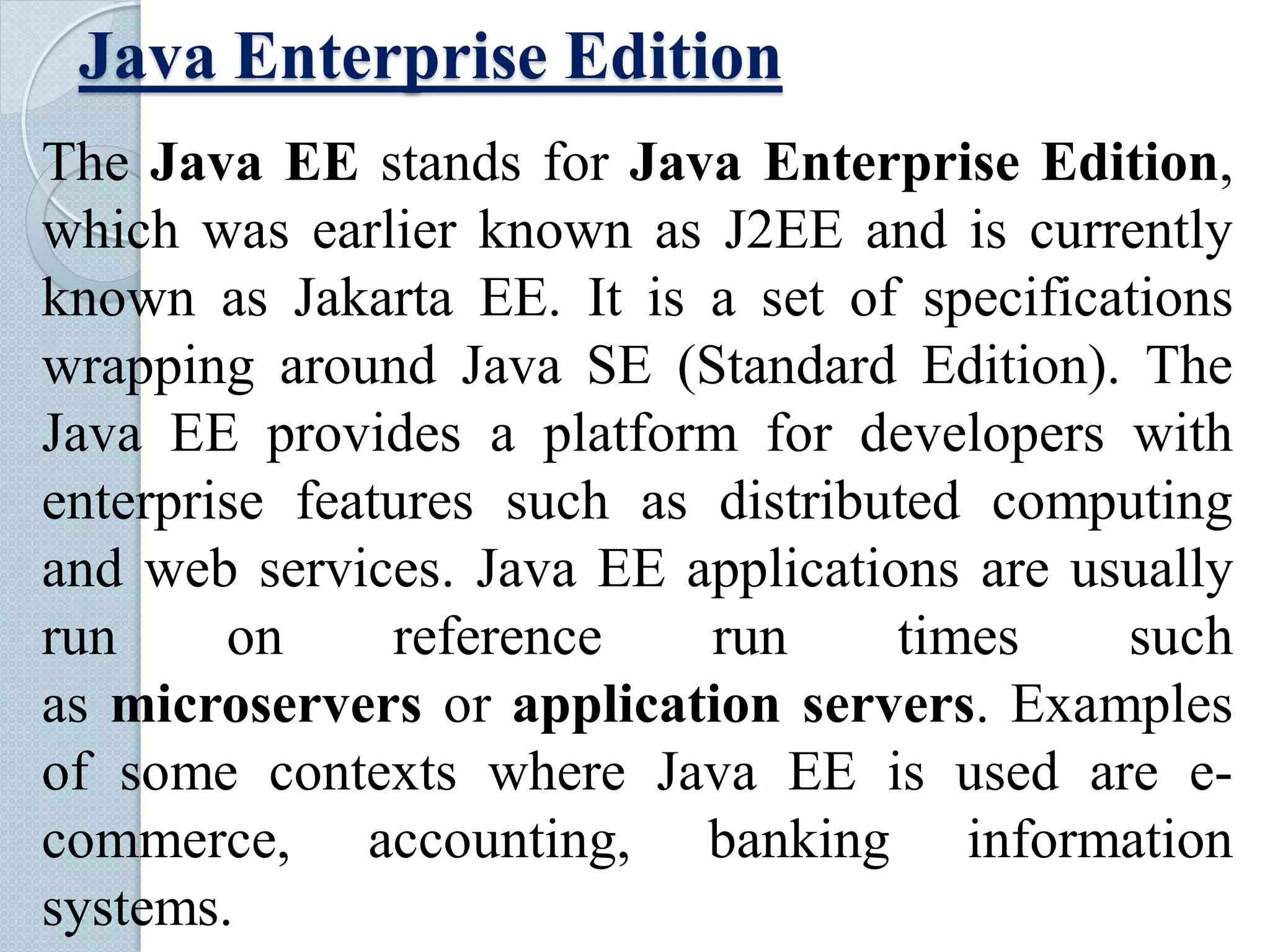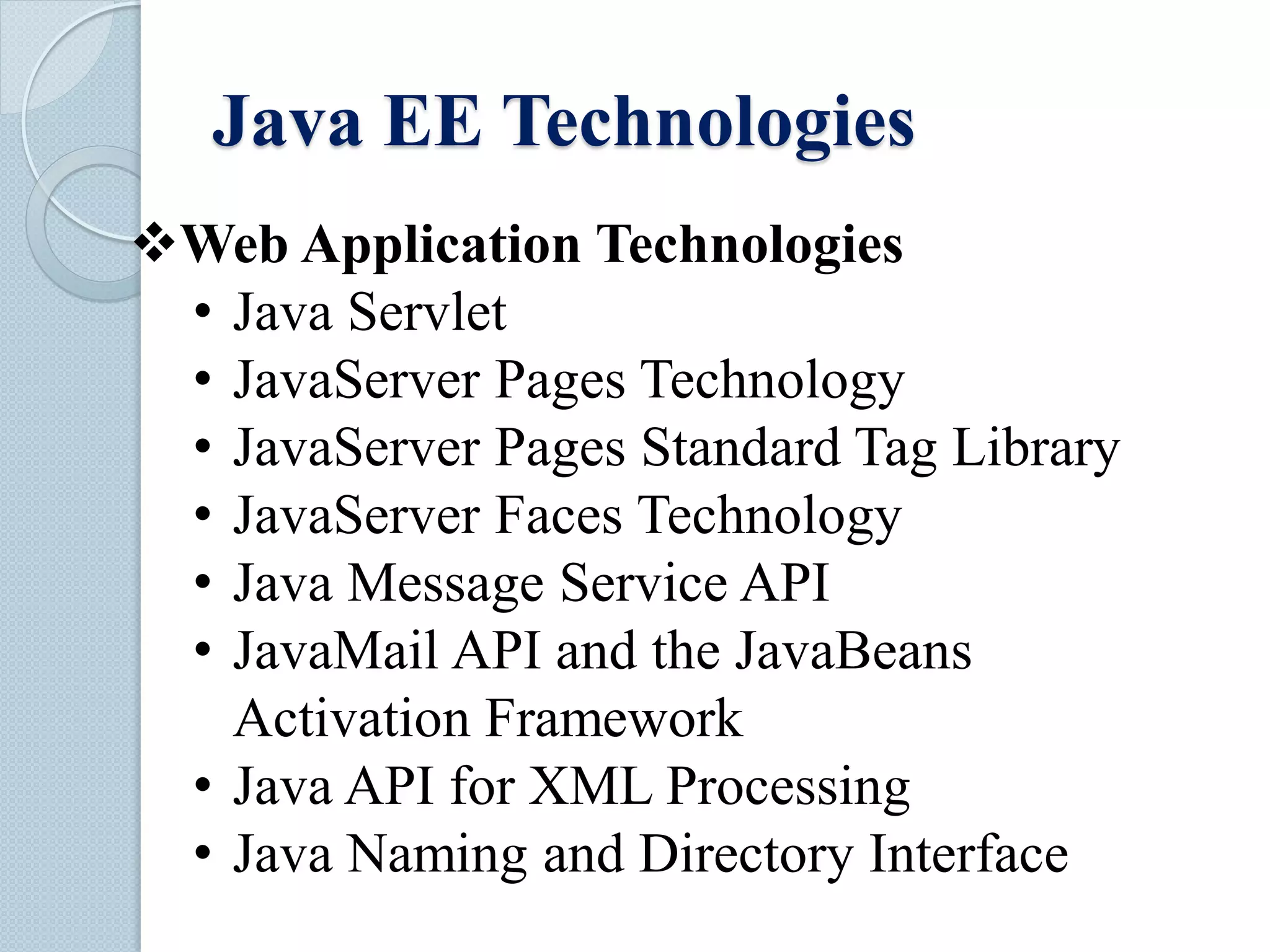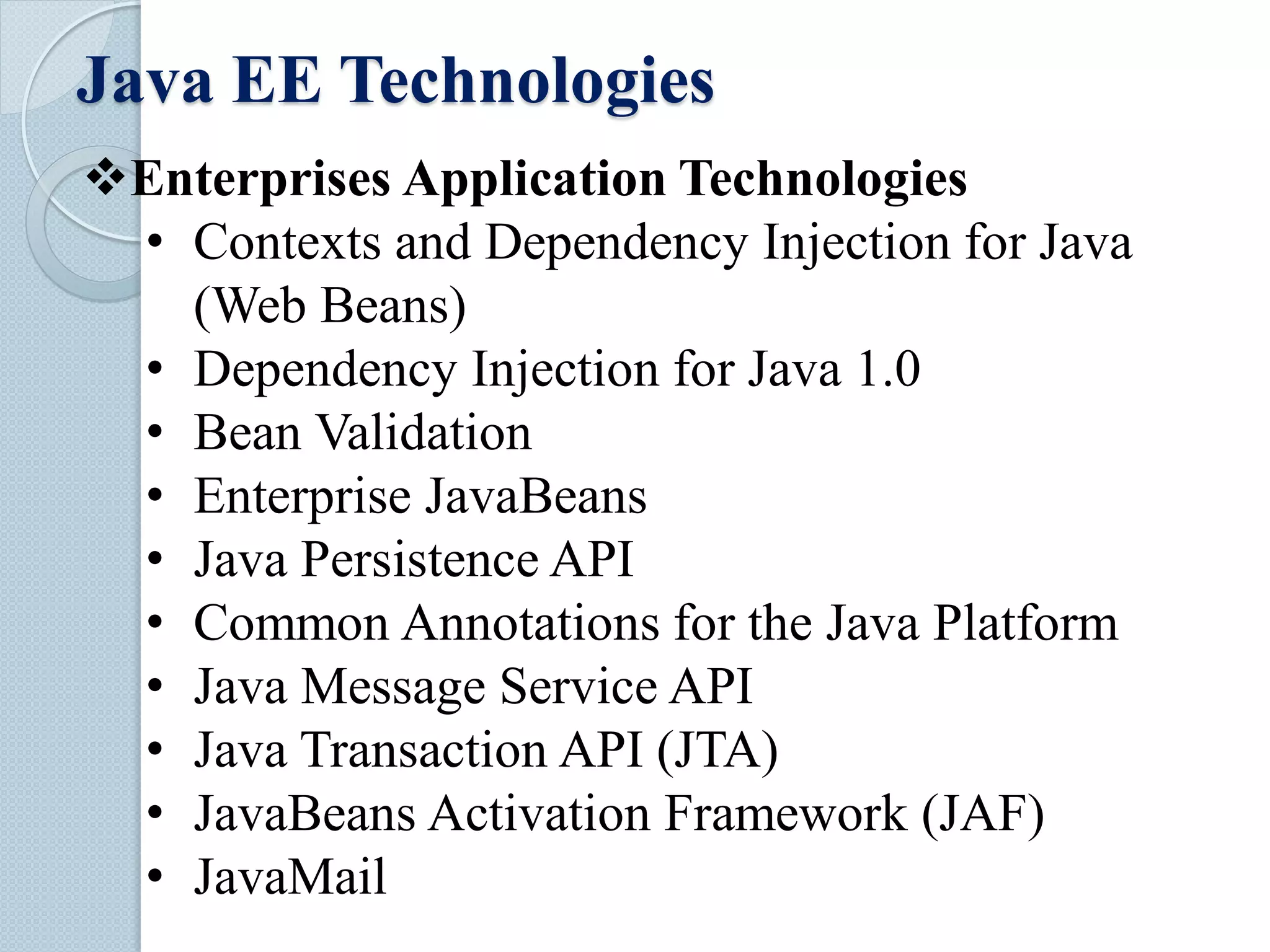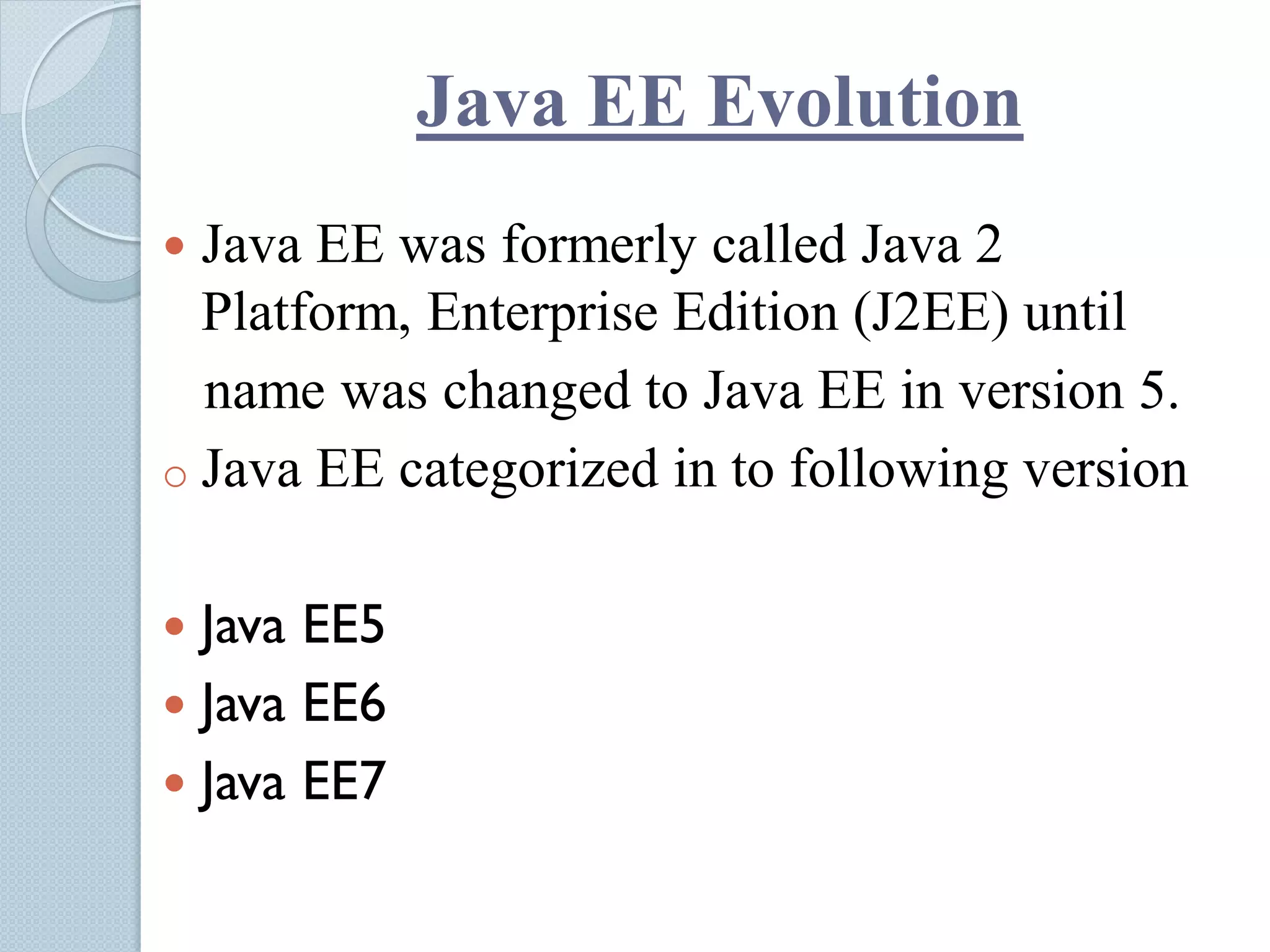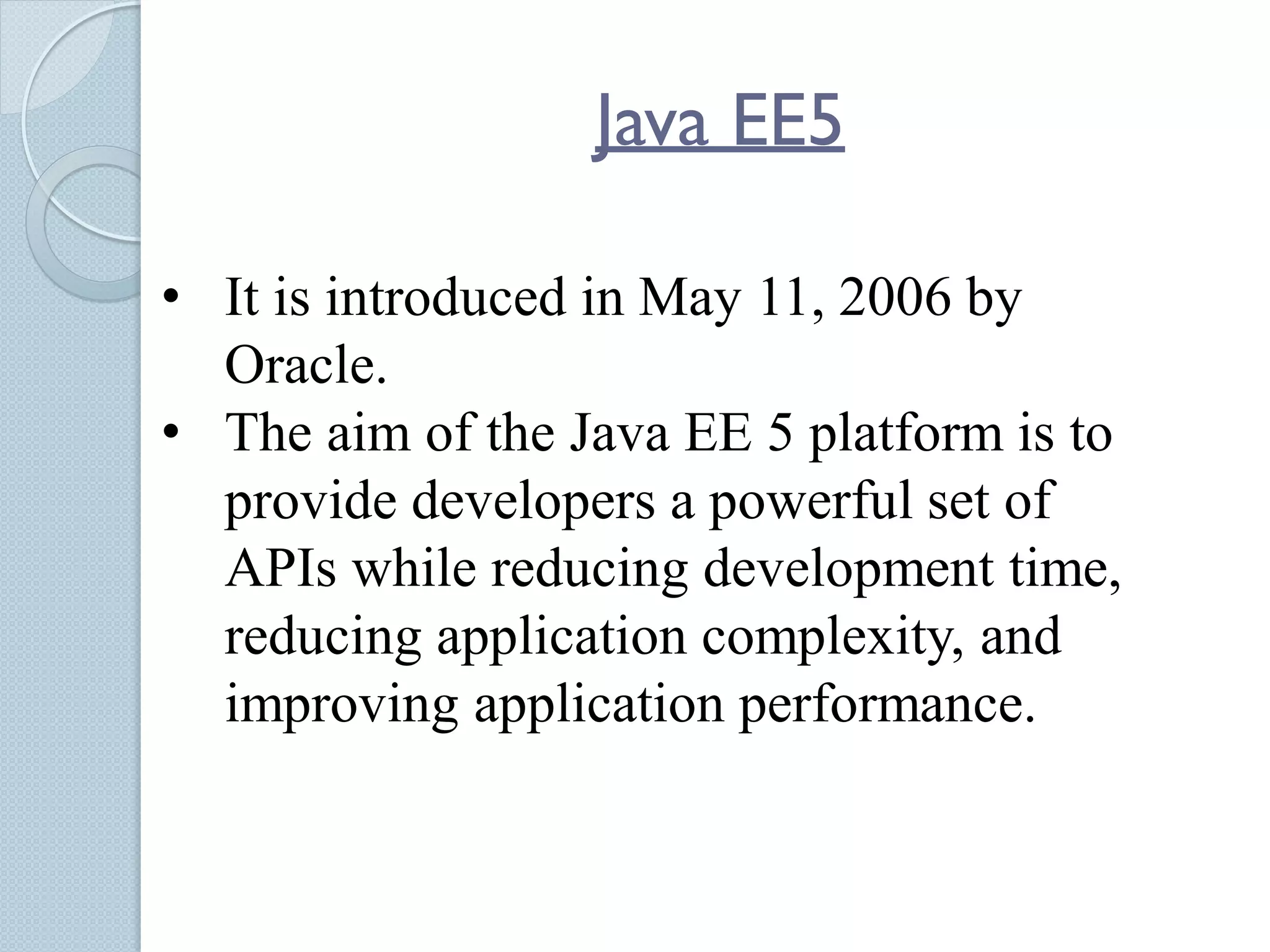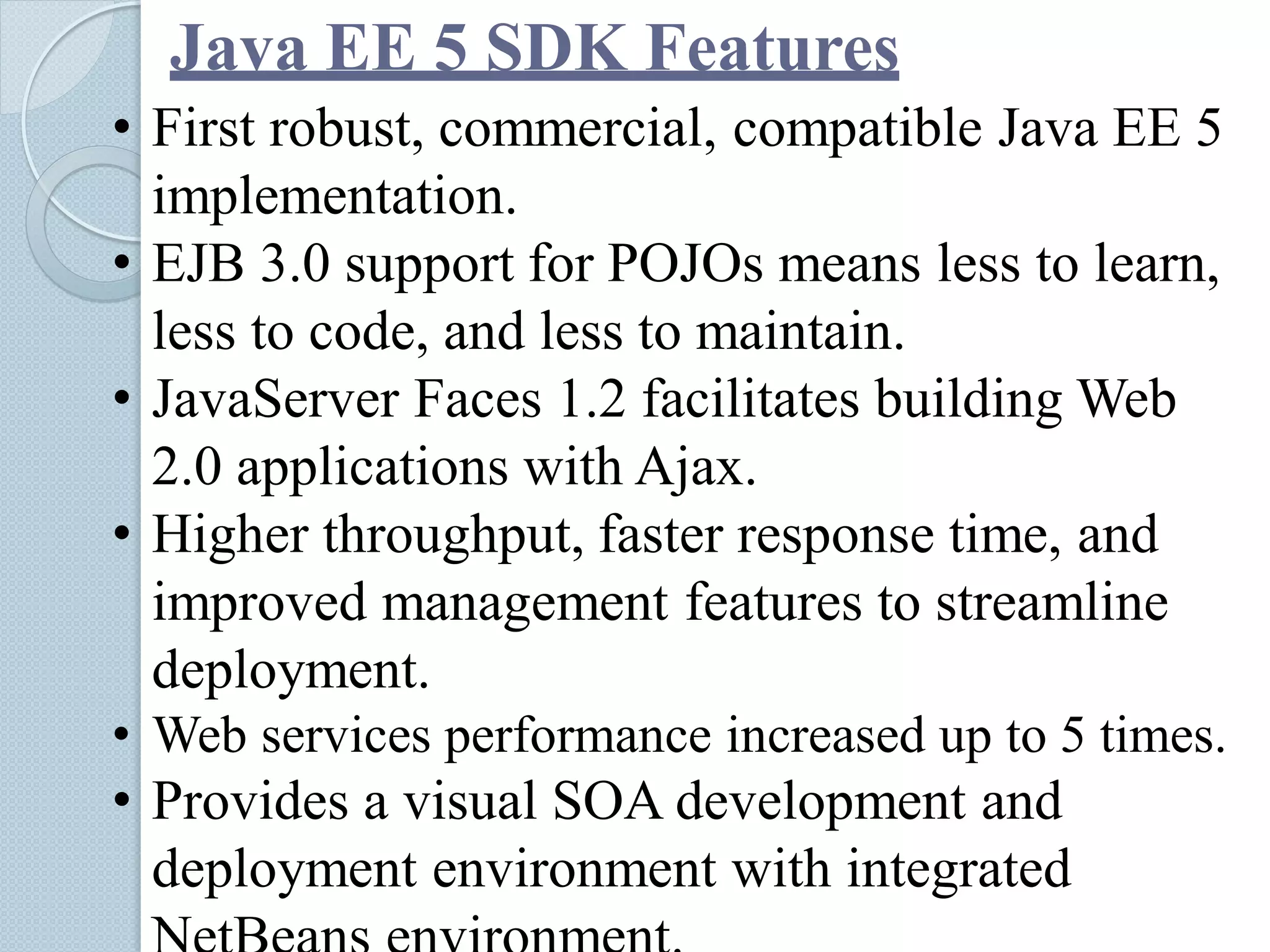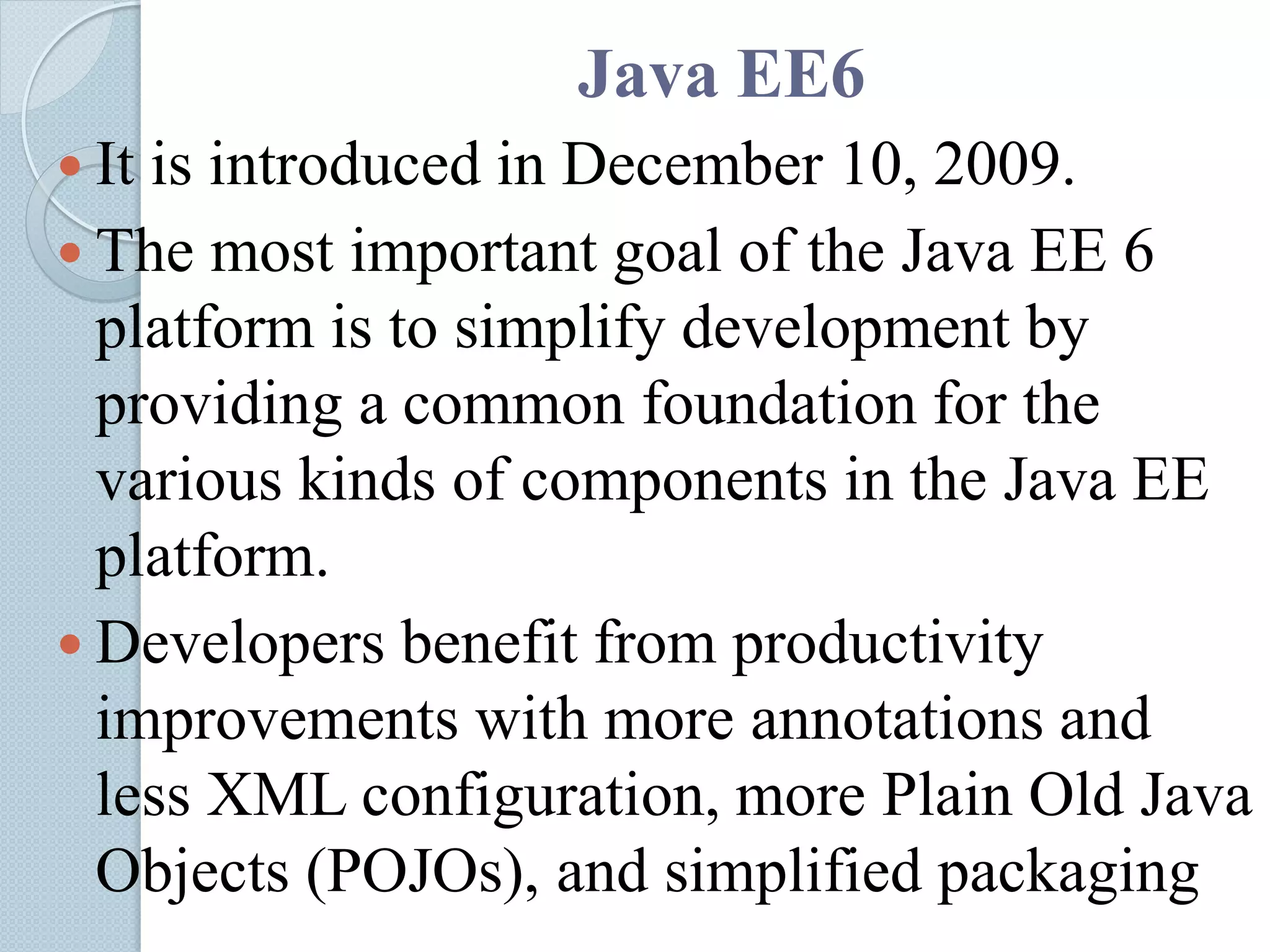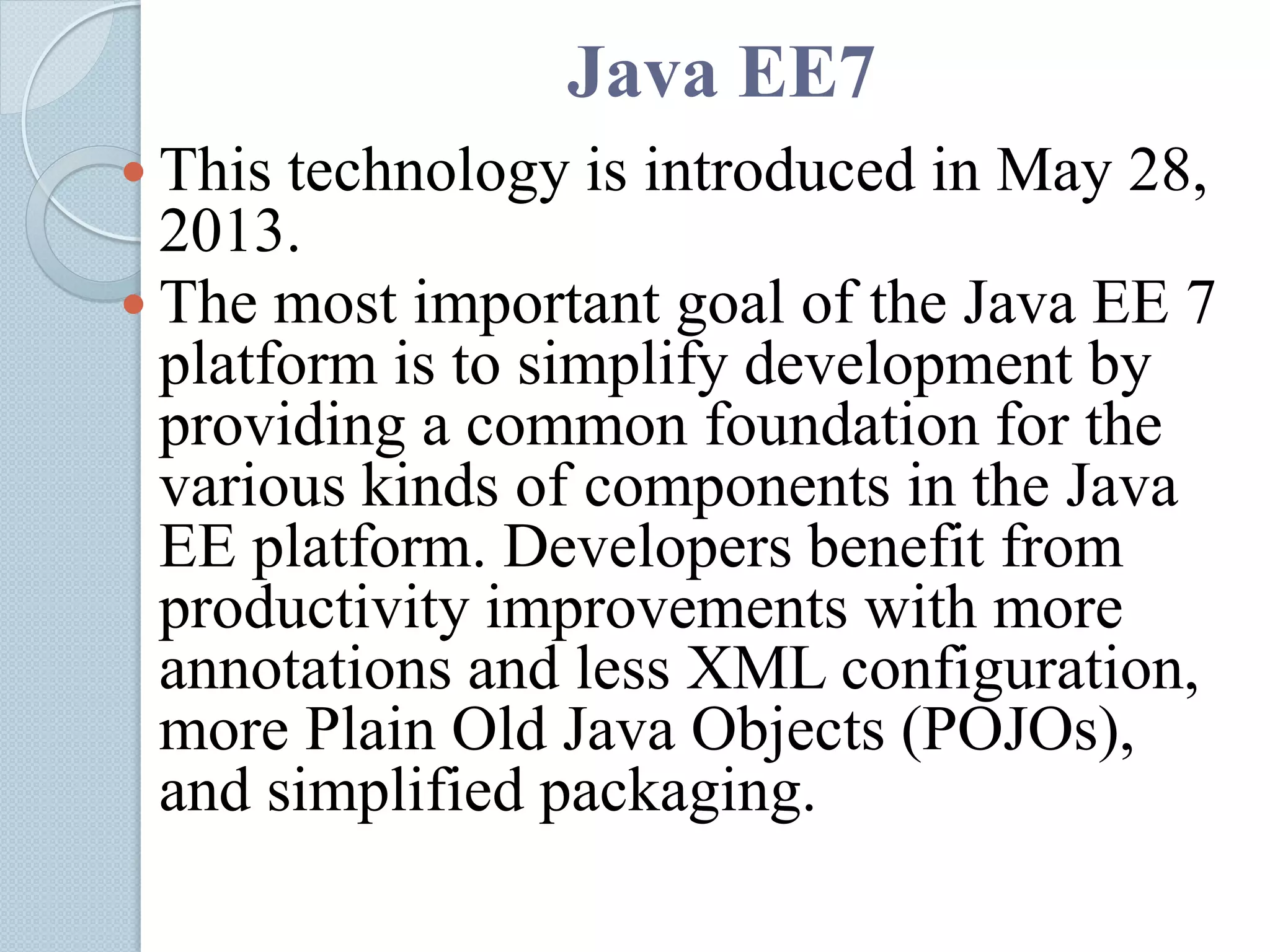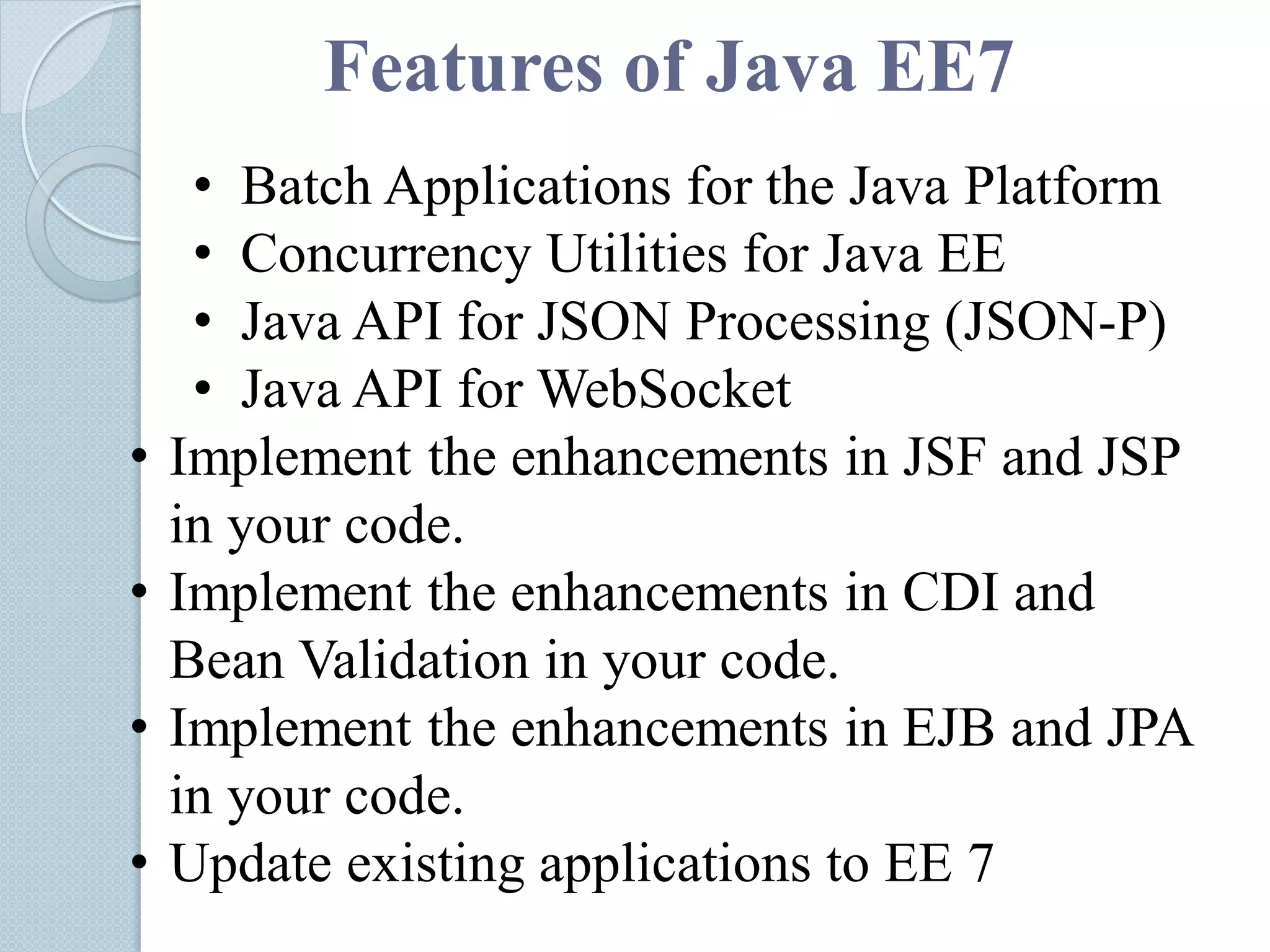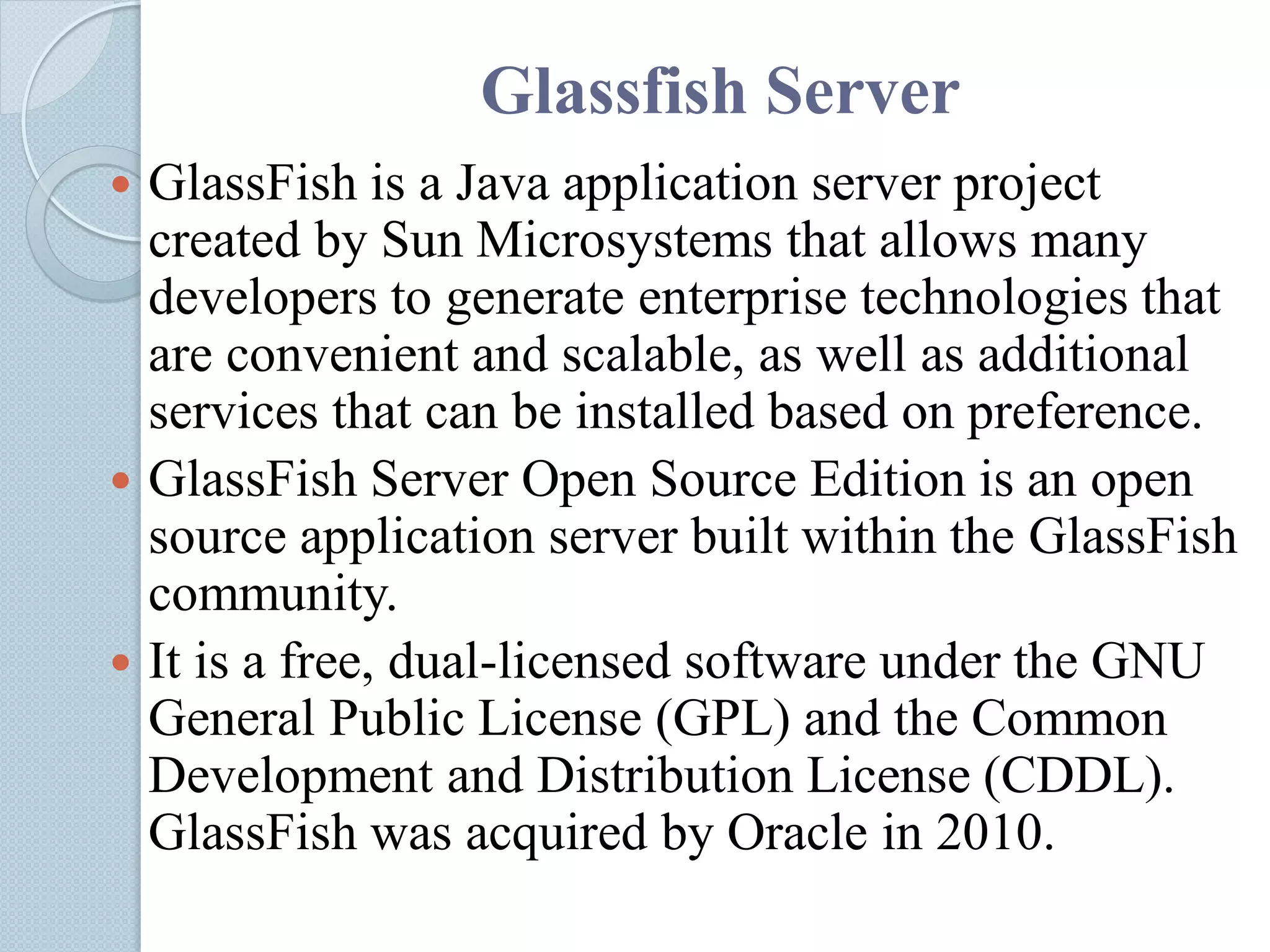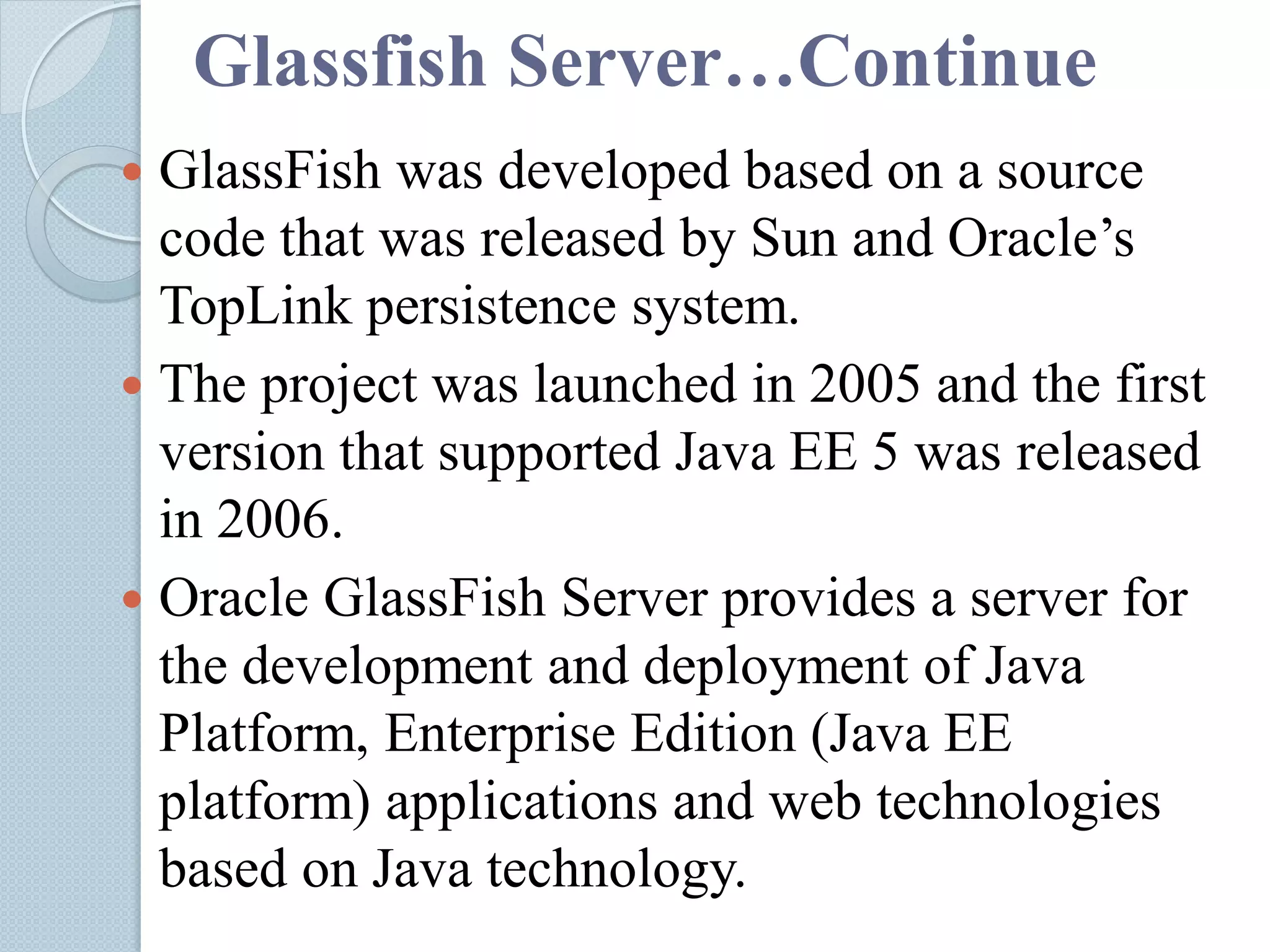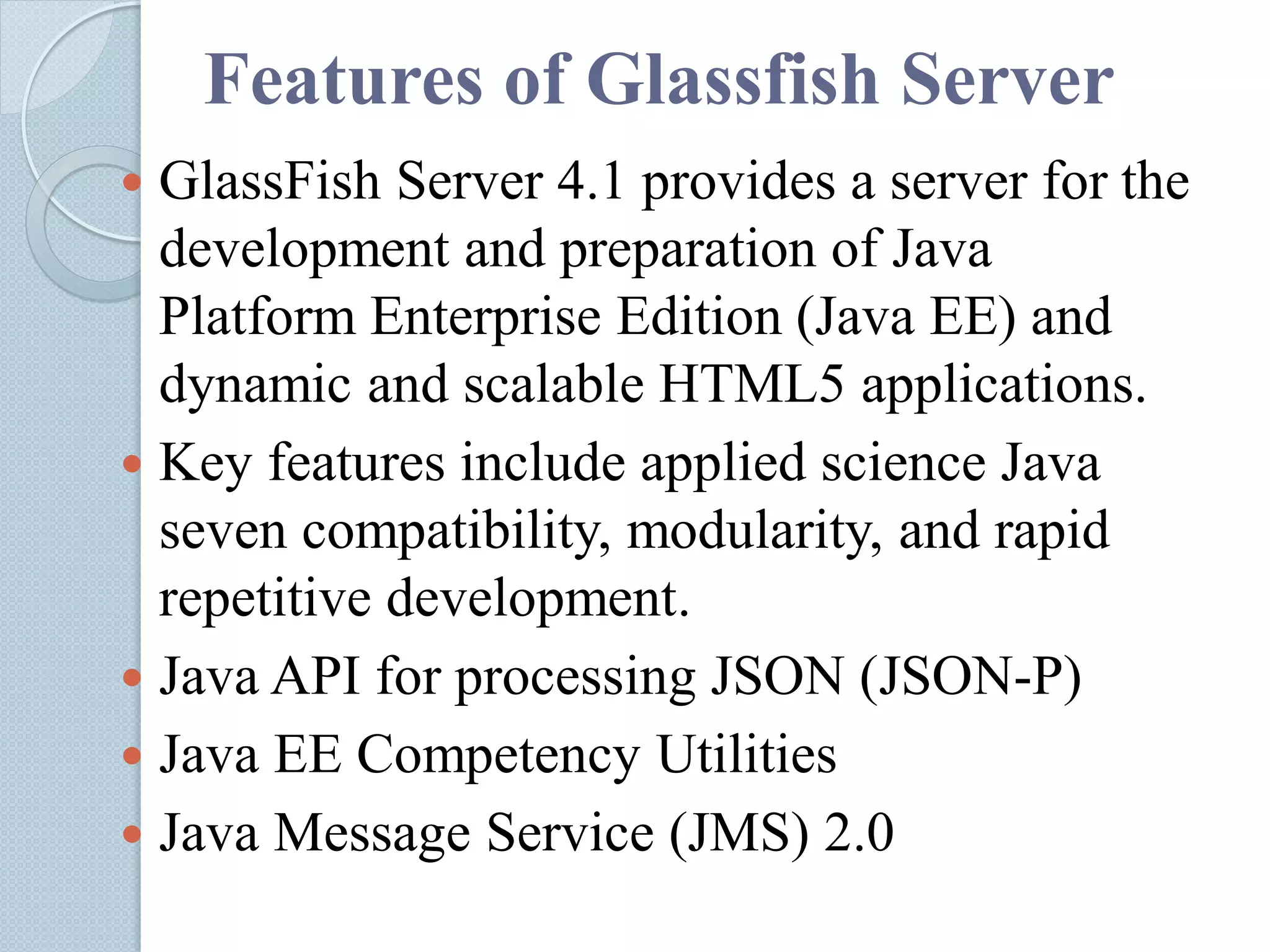This document provides an overview of enterprise Java and related technologies. It discusses what enterprise applications are and how they differ from regular applications. It then describes Java Enterprise Edition (Java EE), its evolution from J2EE to current versions, and some of its core technologies like EJBs, JSPs, Servlets, etc. It also discusses the Glassfish application server, its features, and how it implements the Java EE platform. The document aims to introduce readers to enterprise Java development and the technologies involved.
